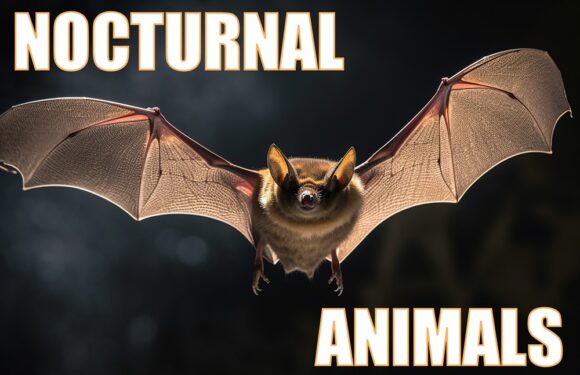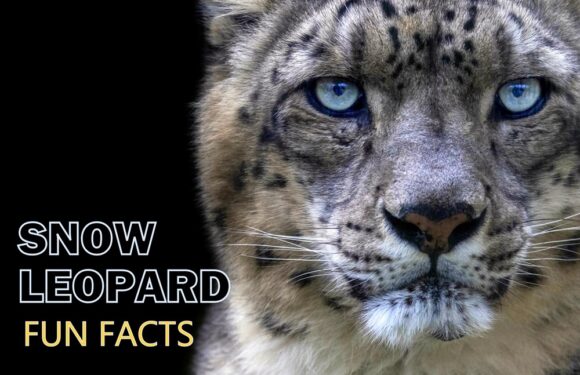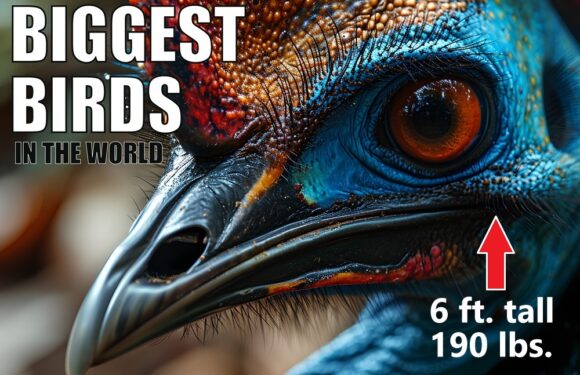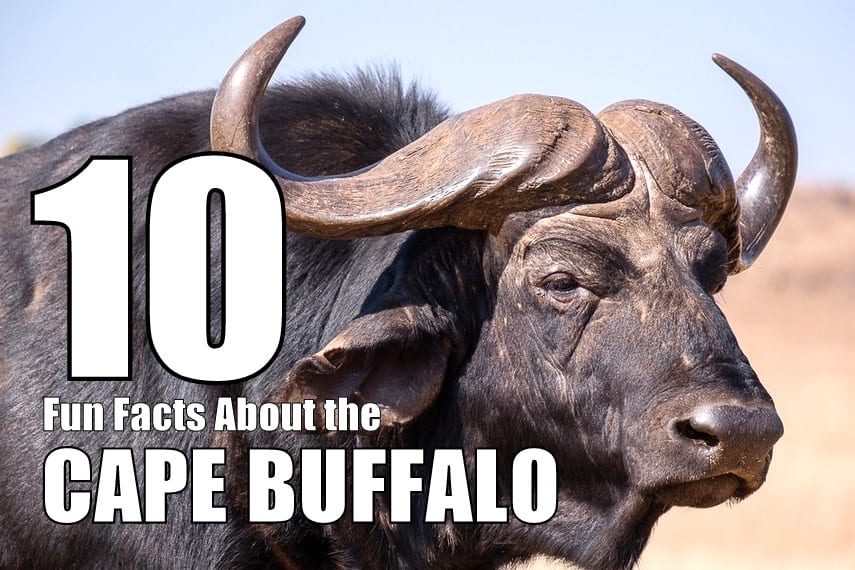
The Cape buffalo, or African buffalo, is a prominent resident of Tanzania’s national parks and game reserves.
Known for its imposing presence, this buffalo species belongs to the “Big Five” game animals, a designation that includes some of Africa’s most sought-after wildlife.
1. Cape Buffalo Are One of Five Subspecies
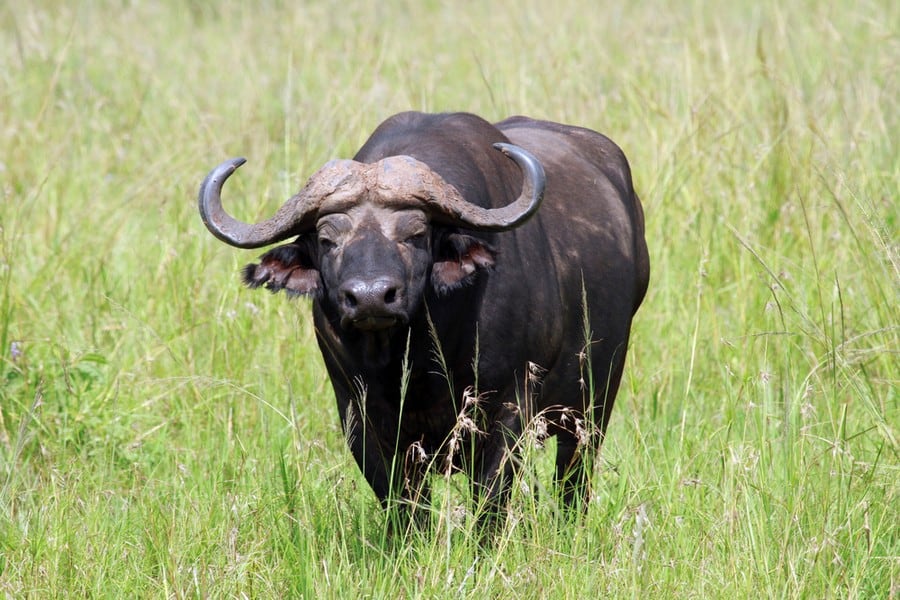
The Cape Buffalo, scientifically known as Syncerus caffer, are indigenous to the African continent. They are the largest and most common buffalo in Africa. Their range extends across South Africa, Kenya, Tanzania, Zambia, and Zimbabwe.
In addition to the Cape buffalo, there are four additional subspecies of buffalo in Africa: Dwarf, Forest or Congo buffalo, Sudan buffalo, Nile buffalo and Virunga buffalo.

Cape buffalo are not the same as water buffalo. Water buffalo are a different species found in Asia, which has been domesticated.
2. They’re Really Big
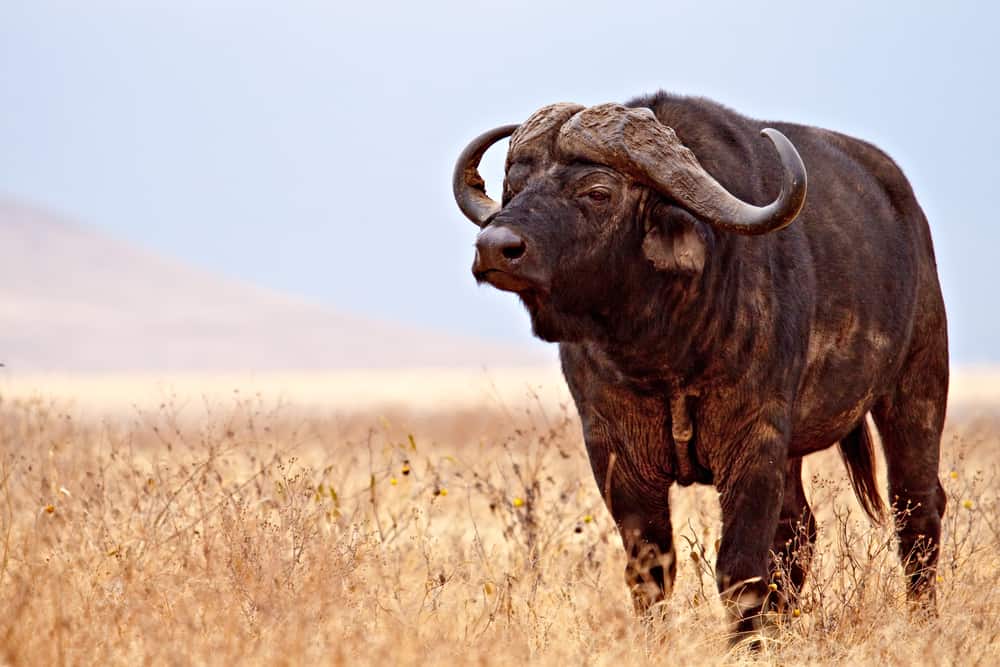
Cape buffaloes are known for their robust build and muscular stature. They are the largest of the five subspecies. Males, known as bulls, can weigh between 1,100 and 2,000 pounds (500 to 900 kilograms) and stand at a height of approximately five feet (1.5 meters) at the shoulder.
While similar in height to large cattle breeds, Cape buffaloes are more solidly built, with a stockier frame. To put it in perspective, an adult Cape buffalo can weigh as much as a small car. Imagine a compact car like a Mini Cooper, which weighs around 2,600 pounds (1,200 kilograms) – a large male buffalo comes close to this weight.
3. Cape Buffalo Are Led By a Matriarch
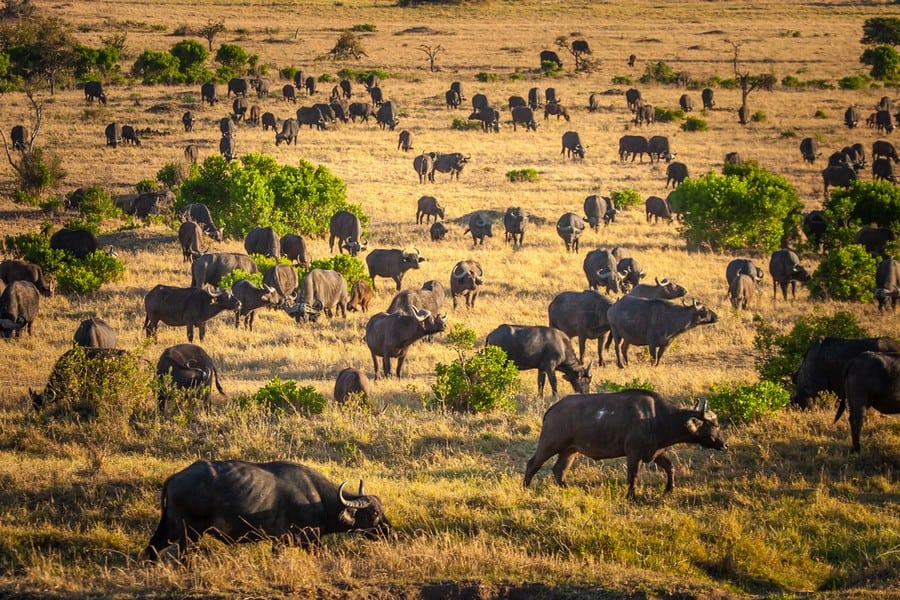
Buffaloes are inherently social animals and are often found in large herds, especially during the dry season when resources are scarcer. Herds can consist of a few dozen to several thousand members. Within these herds, a dominant female, known as the matriarch, plays the main role in leading the group.
Mature males typically occupy dominant positions within the herd. These males compete for mating rights. Their status is determined by factors such as size, strength, and age. Younger males often form bachelor groups until they are strong enough to challenge for a position within the main herd.
4. They Have a “Boss”
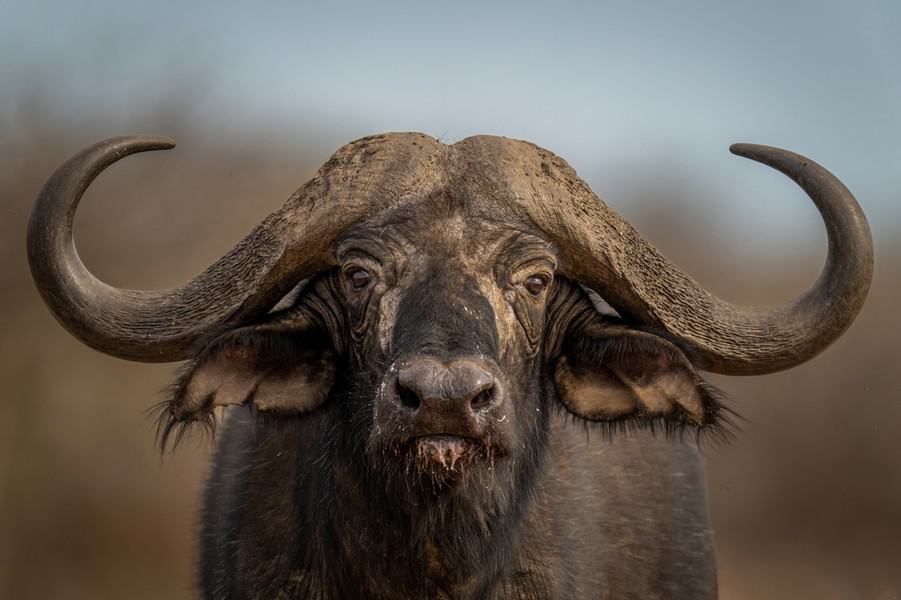
A characteristic of the Cape buffalo’s horn structure is called the boss. This is the solid shield formed where the horns meet at the base of the buffalo’s forehead. In mature males, this boss becomes hard and bony, offering significant protection during fights with other males or when defending against predators. The boss is so robust that it is nearly impervious to harm, acting as a natural helmet.
The horns are large and curved, extending outwards and downwards before curving back up and inwards. The shape and sharp points of the horns make them effective weapons against predators like lions.
5. Cape Buffalo Play Team Defense
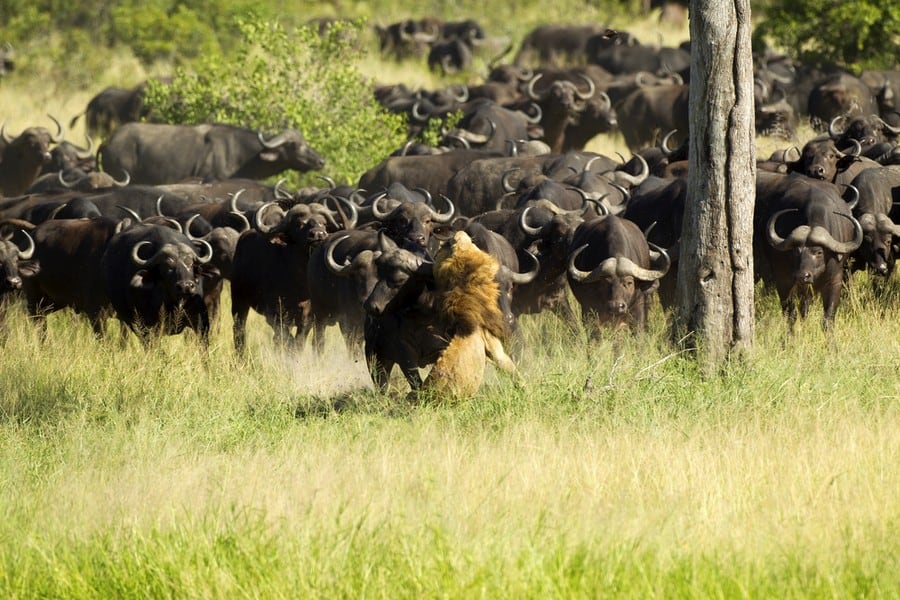
The Cape buffalo uses sound defense tactics while protecting the herd. In the face of threats, they display impressive collective strength. They form a protective circle around the young, sick, or elderly, with the strongest members facing outward to confront potential predators.
The animals they prey on adult African buffaloes include lions, hyenas, crocodiles and African wild dogs.
6. They’re Unpredictable and Aggressive

Cape buffaloes are known for their aggression. They engage in mock charges or loud vocalizations to deter predators. If these warnings are ignored, they are capable of launching coordinated charges. Furthermore, Cape buffalo will even pursue and advance on predators, which often successful thwarts their attacks.
Because of their strength, loyalty, and an unyielding attitude, Cape Buffaloes have earned their nickname “Mafia of the Bush.” This temperament is probably why they have not been domesticated and have no domesticated descendants. These animals are also known as “the Black Death” or “the widowmaker,” due to their dangerous nature.
7. Cape Buffalo Are Friends With Oxpeckers

The Cape Buffalo and Oxpecker bird share a mutually beneficial alliance. To the buffalo, ticks are a nuisance and pose health risks. Enter the Oxpecker bird, a specialist in tick removal. Oxpeckers feed on the parasites found on the Cape Buffalo’s skin and in its fur. This helps the buffalo by reducing the parasite load while providing an available source of food to the bird.
Oxpeckers offer an added bonus. They serve as a sort of early warning system for the buffalo herd. Their sharp eyes and keen senses can detect approaching danger, and they emit warning calls to alert the buffalo to potential threats.
8. They Feed Mostly on Grass
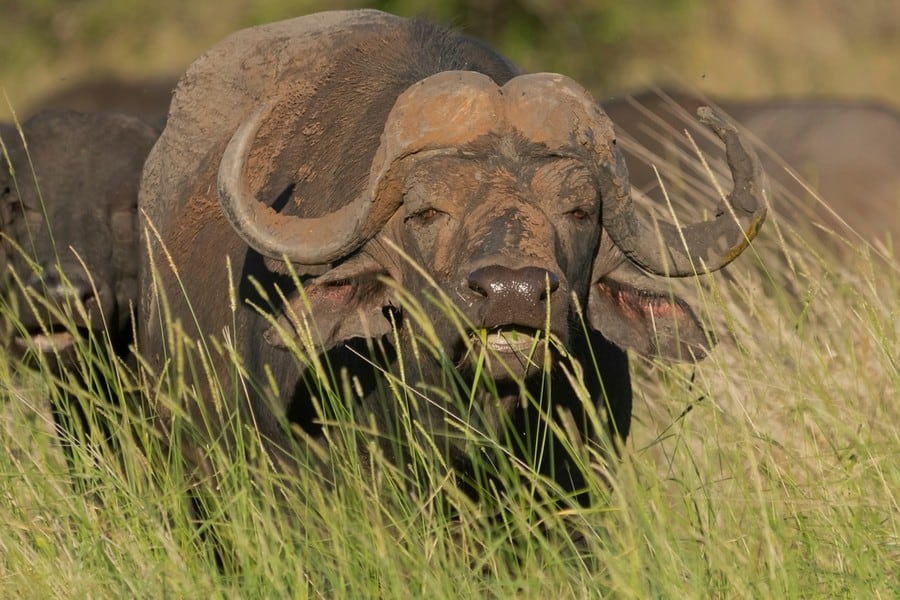
Cape buffaloes primarily reside in savannah grasslands, floodplains, and forests. They favor areas with dense brush or woodland, which provide cover and a rich supply of grass. As herbivores, they primarily consume grass, often relocating to areas where grass is abundant.
During the rainy season, when grass is plentiful, it forms the bulk of their diet. In seasons where grass is scarce, Cape buffalo will consume other types of vegetation including leaves, twigs, and even bark.
Like many other herbivores, Cape buffaloes are ruminants, which means they have a specialized four-chambered stomach. Their digestive system allows them to break down fibrous plant materials effectively, extracting the maximum nutrition.
9. Cape Buffalo Wallow in Mud
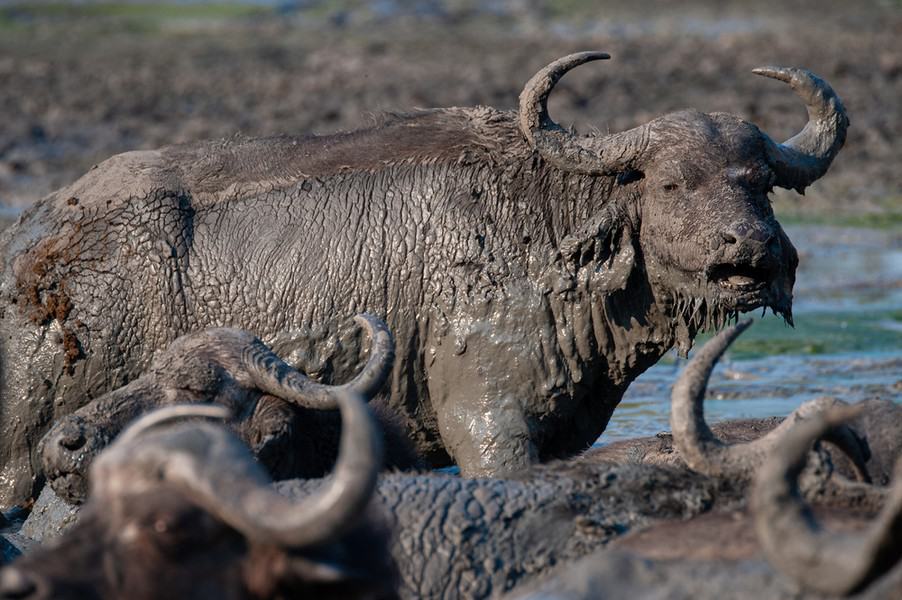
Cape buffaloes are often seen wallowing in mud, which serves multiple purposes. It helps them cool down in the heat, protects them from biting insects, and provides relief from skin irritations.
The savannah can be scorching, and heat stress is a real concern. When they immerse themselves in mud, it provides a cooling effect as the mud slowly dries on their skin. This natural air conditioning helps them combat the heat and maintain a comfortable body temperature.
Mud also acts as an insect repellent, forming a barrier against biting insects such as flies and ticks. Wallowing in mud can also alleviate itching and discomfort by covering these irritations with a soothing layer of mud.
10. They’re Actually Great Swimmers
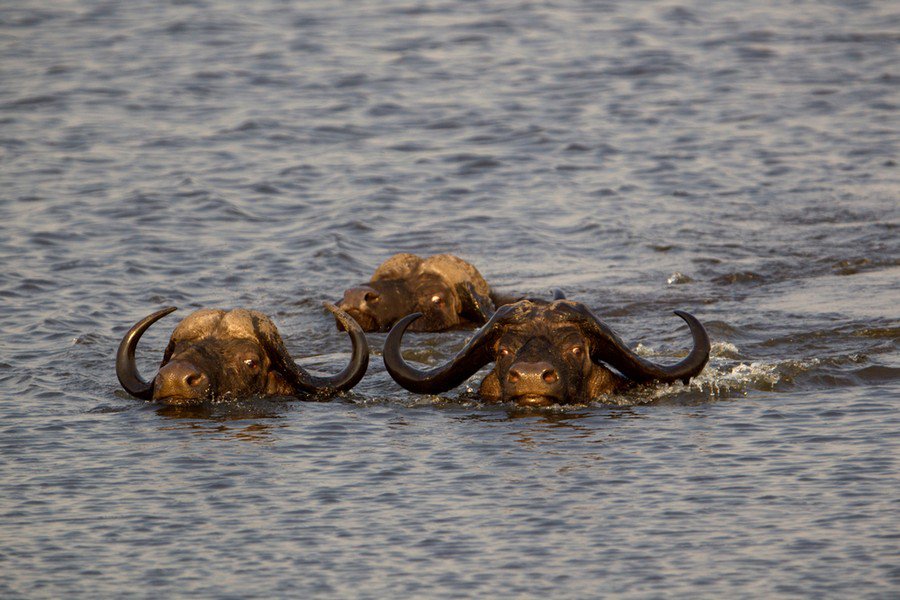
One might not expect an animal that large to excel in the water. However, this bovine possesses a surprising ability to swim with grace and determination. In their native habitat, they often encounter rivers, streams, and waterholes. Cape buffalo can navigate through water with ease, whether it’s a calm river or a muddy watering hole. Their buoyant bodies and powerful legs allow them to stay afloat and move efficiently.
Swimming is not a leisurely activity for Cape buffaloes. They rely on their swimming abilities to travel across the savannah and to escape predators that may not be as comfortable in the water.
Cape Buffalo Quick Facts
- Common Name: Cape Buffalo
- Scientific Name: Syncerus caffer
- Size: Approximately 4.6 to 6.2 feet tall at the shoulder, with a body length of 8.2 to 11.5 feet
- Weight: 1,100 to 2,200 pounds
- Lifespan: 15 to 25 years in the wild
- Diet: Herbivore, primarily grasses and vegetation
- Habitat: Diverse ecosystems, including savannahs, grasslands, woodlands, and swamps, across sub-Saharan Africa
- Conservation Status: Least Concern
—
Want to see buffalo in the wild? Book one of our Tanzania Safaris.























































